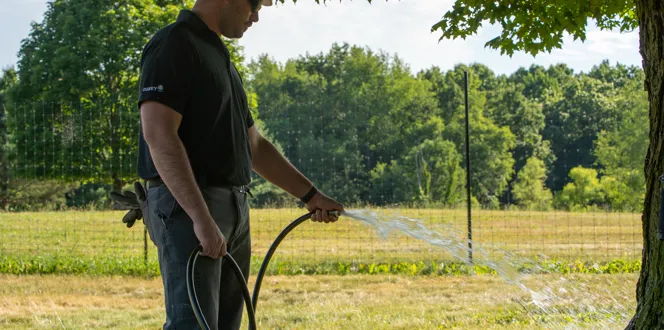Test the furnace, weatherize the windows, clean the gutter. As the fall season trickles in, we each have a checklist to help us prep for winter.
Just like us, trees take important steps to make sure they’re ready for the new season.
Keep reading to learn more about how trees transition to winter. You’ll be amazed by what they can do and learn a few ways to help them sail through the season.
What happens to deciduous trees in the winter?
When we get a whiff of chilly weather, we cozy up in our winter gear. For trees, it’s not so cut and dry. They go through quite a complex process to avoid freeze damage.
How do trees prepare for dormancy?
Our trees have the amazing ability to sense the weather change and prep themselves accordingly.
As the fall days get shorter and the nights get colder, that’s when trees know to go dormant, which is like hibernation.
Here’s how it works:
- First things first! Deciduous trees slow their growth and purge their leaves. Most of the year, leaves rely on water from the tree roots. But, to prepare for the dry winter ahead, trees need to save as much water as possible. Adios leaves! That’s one less thing to hydrate.
- Next, trees make sure their cells are protected from frigid temperatures. All year, trees transfer water into their cells. As the temperature drops, trees move that water from inside the cell to the tiny spaces on the outside in between the cells. That way, the trees’ cells won’t freeze up.
- Once it’s cold enough, the water outside the cells freezes, which creates a spurt of heat that protects the cells. At the same time, sugars, proteins, fats and more build up inside the cells. That’s another way trees defend themselves against the cold.
Can you believe trees are doing all that while it looks like they’re “sleeping"?!
Is there anything I should do to help trees prepare for winter?
You bet! Trees need a hand from us as before they go dormant.
Here’s how to help:
- Trees (especially conifers) need as much water as they can get to make it through winter. Before the ground freezes, give your tree a hearty drink of water if you haven’t gotten much rain this fall.
- Top your watered tree off with a 2-to-4-inch deep layer of mulch to help lock in moisture.
- Inspect your tree. Look for weak limbs, diseased branches or other hazards that need to be addressed before winter.
- Prune your tree for a strong structure. One of the best times to prune is after the tree is leafless and dormant but before the snow and ice arrive. If it’s a tall tree, have your arborist handle. Safety first!





